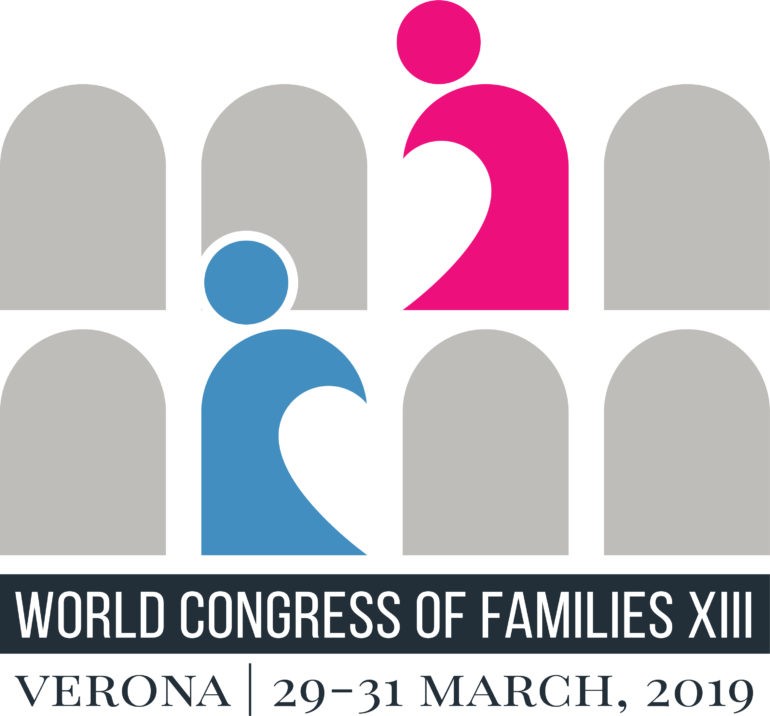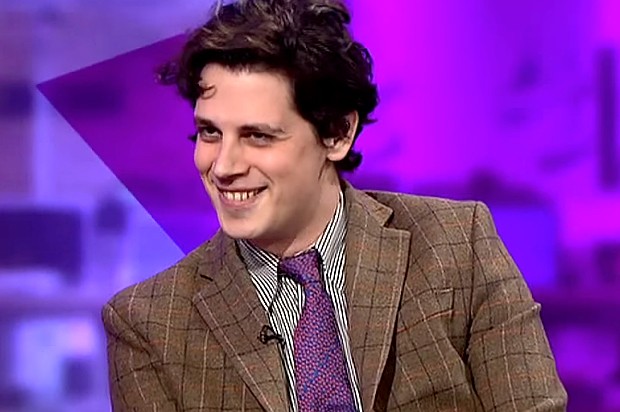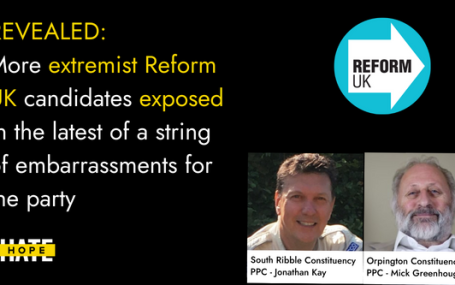HOPE not hate uses cookies to collect information and give you a more personalised experience on our site. You can find more information in our privacy policy. To agree to this, please click accept.
Far-right movements have long persecuted and oppressed LGBT+ people, at worst involving the Nazi imprisonment of more than 50,000 gay men, including an estimated 5,000 to 15,000 who were sent to the concentration camps, alongside lesbian and transgender people. Throughout the postwar period, anti-LGBT+ hate has remained a central tenet for groups across the far-right spectrum.
However, there has been a shift within some Western far-right groups, which have altered their ugly messaging around, specifically, gay men, to reflect the realities of the far right. As we mark the 50th anniversary of the Stonewall riots and rightly celebrate the advances made since, we must also not lose sight of the changing nature of the contemporary far right’s attacks on, and co-option of, LGBT+ politics today. To this end, below we examine two key such trends.
‘Gender Ideology’: An Old Moral Panic Returns
One increasingly prevalent far-right trope is framing misogynistic and anti-LGBT+ sentiment as a defence of traditional values against ‘gender ideology’. As Gillian Kane, Senior Policy Advisor at women’s reproductive rights organisation Ipas wrote in The Guardian in March 2018, the term is:
A theory drummed up by hard-right religious activists, who present [gender ideology] as a gay- and feminist-led movement out to upend the traditional family and the natural order of society. It’s a catchall phrase to sell a false narrative and justify discrimination against women and LGBT people.
Of course, such fearmongering about LGBT+ (and feminist) communities is by no means new and we have seen it elsewhere in recent years, for example, with the stoking of anti-trans views when it comes to the topic of gender neutral bathrooms. Even ‘gender ideology’ Kane traces to the Vatican in the mid-1990s, spreading then in the early 2000s to an international trend, prevalent in Poland, Brazil, Ireland, Germany and France. In the US during the same period (following on the heels of the growth of HIV/AIDS discrimination of LGBT+ communities) came similar propagandising from the US Christian right, who described LGBT+ causes as being part of a ‘Gay Agenda’. This was itself rooted in preexisting notions, such as that furthering LGBT+ rights was really an attempt to “promote” homosexuality and “recruit” heterosexual people, including children who – in a continuation of another longstanding homophobic trope – were argued to be at risk because of narratives conflating paedophilia with homosexuality.

As J. Bob Alotta, Executive Director of the Astrea Lesbian Foundation for Justice wrote in The Advocate this month, whilst such hateful ideas are not new, less attention has been paid to how the promoters of the gender ideology narrative are “extremely well-funded, and well-organized across sectors and regions.” Alotta highlights the World Congress of Families (WCF) conference held this year in Italy, an annual event organised by the International Organization for the Family – perhaps the largest and most influential international anti-LGBT+ organisation. The 2019 event was not just fringe cranks without influence. As Alotta noted, alongside activists and civil society actors it brought senior politicians into the fold, including the Deputy Prime Minister of Italy and the President of Moldova.
As the Southern Poverty Law Centre (SPLC) reported, Alexey Komov, WCF Russia representative, closed the conference telling the audience that WCF is working on government levels in Moldova, Italy and Hungary. Moreover, networks rallying against such a vague and malleable notion as “gender ideology” can use it to attack other groups. As the SPLC report highlighted, “Speaker after speaker used similar talking points, voicing how important “the family” is to the survival of Europe and to sovereign European nations. They lamented low European birthrates while dog whistling against immigration in some instances and celebrating a strict gender binary in others.”
Homonationalism and Pinkwashing
Whilst much of the far right remains resolutely and vehemently anti-LGBT+, some prominent far-right groups and individuals proclaim to hold the right to be gay as a core Western value, and in some cases have embraced openly gay individuals as figureheads, making explicit homophobia something of a dividing line for the far right in the West.
This voiced value is, in practice, extremely narrow and partly serves strategic purposes. Such positioning of the right to be gay as a core Western value has been used by the far right to attack Islamic and “Third World” cultures for their perceived intolerance, bolstering the argument that such cultures are incompatible with the West, and also making far-right actors appear more palatable to audiences with more liberal attitudes towards sexuality.
The concept of “homonationalism”, developed by Rutgers University professor Jasbir K. Puar, is useful when considering the utilisation of queer identities and politics for nationalist causes. As James Michael Nichols wrote for Huffington Post, homonationalism involves “conceptually realigning the ideas invested within the realm of LGBT activism […] primarily to justify and rationalize racist and xenophobic perspectives”. As pointed out by Robert Tobin for The Gay and Lesbian Review in 2017, this phenomenon has been noted for some time in Europe and there have been a number of high-profile openly gay, radical populist right and far-right leaders, for example Dutch politician Pim Fortuyn.
Drawing on the homonationalist tactics of such European far-right leaders, some far-right activists, especially the so-called “alt-light” wing of the broad Alternative Right, have cynically used LGBT+ rights as a wedge issue between LGBT+ individuals, liberal left-wingers and Muslims, who are presented as a monolith of hatred towards LGBT+ people. “Liberals; Either you support Islam or gay rights. Pick one. You can’t have both”, tweeted far-right British vlogger Paul Joseph Watson in 2017.
The far-right campaign to turn LGBT+ communities against Muslims became particularly intense after Omar Mateen, a Muslim man, massacred 49 people at the gay nightclub Pulse in Orlando, Florida, in June 2016. For example, British alt-light figure Milo Yiannopoulos penned a Breitbart article titled: “The Left Chose Islam Over Gays. Now 100 People Are Dead Or Maimed”, in which he states that “violence is not the extreme in Islam any more: it’s the norm”.

As Donna Minkowitz wrote in Slate, in entertaining such tactics the far right is engaging in “pinkwashing”; appearing gay-friendly to moderate the movement’s image and broaden the appeal of far-right groups to millennials, who are broadly supportive of gay rights in comparison to previous generations. Association with gay figures adds a sheen of tolerance to heterosexual alt-light figures, despite the fact they may hold a variety of far-right views. Yiannopoulos regards himself as “every straight white male’s gay hall pass”.
Embracing gay figures also serves to confound liberal and journalistic expectations of how a far-right movement should appear. As Maureen O’Connor wrote for The Cut magazine, Yiannopoulos’ whole career has been propelled by “the sheer cognitive dissonance between his flamboyant self-presentation and callous politics”. Yiannopoulos consciously uses his identity to deflect accusations of bigotry from the left, admitting to vlogger Dave Rubin in 2015 that he can “go on TV and say all manner of outrageous things about feminism only because [he’s] a homosexual”, as “it’s very difficult to argue that a flamboyant homosexual who never shuts up about, you know, black boyfriends is in any way bigoted”.
However, this voiced “tolerance” often comes hand-in-hand with attacks on (the aforementioned) “gender ideology”, and is almost exclusively confined to gay men; as Sophie Wilkinson states in VICE, figures such as anti-Muslim Dutch politician Geert Wilders have “played to an LGB – but not T – crowd”. Modern gay rights movements are often scornfully derided and associated with societal decline; for example, Yiannopoulos wrote in 2015 that the “genteel, camp rightsists of the 1950s” have transformed into “brash, glitter-drenched Pride queens” who he implores to “get back in the closet.”
Lesbians are commonly either ignored or actively denigrated by the alt-light, and trans people are subjected to astoundingly vicious abuse, often portrayed as mentally ill or a danger to children. Whilst some individuals are undoubtedly motivated by a genuine concern around the attitudes in some Islamic communities towards LGBT+ individuals, much of this discourse boils down to little more than shallow, cynical realpolitik.
From Attack to “Defence”
From the shifting, weaponised notion of ‘gender ideology’ to the cynical and likewise weaponised (albeit for different ends) use of homonationalism and pinkwashing, it is clear that the contemporary far right are employing new means to both attack LGBT+ communities and use them to advance far-right agendas. If we are to adequately continue to confront the threats posed to LGBT+ communities from the far right, we must endeavour to track and expose these developments.
Simon Murdoch
If you found this article useful, make sure to stay in the loop with the Ctrl Alt-Right Delete newsletter

HOPE not hate reveals two more extremist candidates from Reform UK, in the latest of a string of embarrassments for the party UPDATE: Just hours…